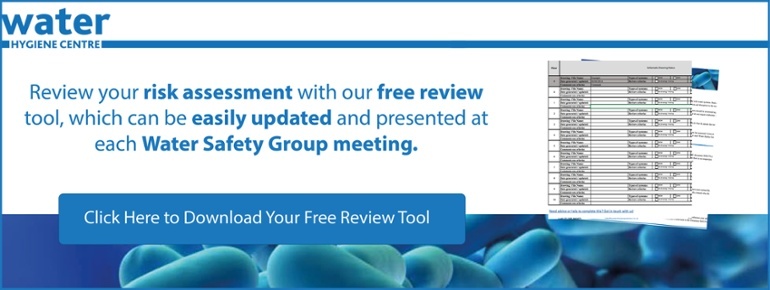Occurrences of Legionella can be a serious concern for Councils and Housing Associations. It’s a hidden danger lurking in water systems, putting your tenants' health at risk. The last thing you want is to worry about potential outbreaks while just trying to provide safe housing.
Following on from Part 1, we’ve put together some simple yet effective actions that Councils and Housing Associations can easily implement to minimise the risk of Legionella. From routine inspections to effective water management strategies, these helpful tips can help keep your tenants safe.
ACTION 1 – Identify Legionella Risks
In this case, the risks are water systems, be it, cold water tanks, hot water immersion heaters, or showers. The first task is to categorise your property stock. Does this already exist?
The second task is to find out what water systems these properties have; this information may also exist already in the servicing or maintenance schedules, or even refurbishment works.
This information could start to be pulled together on a spreadsheet.
ACTION 2 – Assess Legionella Risks
As explained above, a “simple” risk assessment template could be devised internally, which an employee could carry out if they know the typical water systems installed.
Similarly, if the type of water system is generally known, then a desktop exercise of the property stock, including a scoring method of water system type and known occupant susceptibility, could be devised.
This is known as a Property Risk Screen. Bunching similar properties together by “risk” could allow you to devise a schedule of Legionella risk assessments over several years, thus managing budgets and resources.
HSG 274 Part 2 advises to do just this, initially assessing a representative proportion of similar properties, eventually assessing the entire housing stock in a rolling programme.
But if the water systems are generally known and are indeed classed as “simple systems”, “simple control measures” could be applied.
ACTION 3 – Control Measures
HSG 274 Part 2 advises on what simple control measures could be applied to these types of water systems, these are;
 Ensure all systems are included within your Legionella flushing regime before letting the property;
Ensure all systems are included within your Legionella flushing regime before letting the property;- Avoid debris getting into the system (e.g., ensure the cold water tanks, where fitted, have a tight-fitting lid);
- Setting control parameters (e.g., setting the temperature of the calorifier to ensure water is stored at 60 °C) and advising tenants not to adjust it;
- Making sure any identified redundant pipework (i.e. dead legs) is removed;
- Advising tenants to clean and descale showerheads regularly.
Your current control scheme for your larger properties will be larger and more complex than this, so it may be comforting to read these more basic measures. It may also be that you are already doing these, just not documenting them.
ACTION 4 – Implementation
Now that you have a property list, perhaps an idea of the types of water systems included, and now the control measures that need to be applied, let’s look at each one and see how they can be implemented;
|
Control Measure |
Implementation |
|
Flushing out the system before letting the property |
|
|
Avoid debris getting into the system (e.g., ensure the cold water tanks, where fitted, have a tight-fitting lid); |
|
|
Setting control parameters (e.g., setting the temperature of the calorifier to ensure water is stored at 60 °C); |
|
|
Make sure any redundant pipework identified is removed; |
|
|
Advising tenants to clean and descale showerheads regularly. |
|
|
Outside taps and garden hoses |
|
ACTION 5 – Records and Review
Private landlords are not necessarily required to keep water safety records of the above tasks, unless there are five or more employees. Still, maintaining them, especially as an electronic file, would be a good idea. However, councils, Local Authorities, and Housing Associations should keep these records as they would with other properties.
There is no need to review the risk assessment unless there has been a change to the water system. A check to see if any changes have occurred that require different controls can be undertaken during routine maintenance/service visits. Download our Free Risk Assessment Review Tool for further assistance.
Conclusions
Most water systems in housing stocks are considered basic, and their risks are considered low, owing to regular water usage and turnover. However, even low risks must be managed to keep them that way. Mis-managing an inherently low-risk system can create a high-risk situation, think of not servicing your car or driving your car recklessly.
To identify all water systems in the entire housing stock may seem a gargantuan task, which may put you off starting, but it is essential to start doing something. The implementation suggestions above will help prove that risks are managed, and should be where to start.
Feel free to reach out if you have any questions about this blog or if you would like to consult with one of our experts for further advice on water hygiene.
Editor’s Note: The information provided in this blog is correct at the date of original publication – May 2022 (Revised June 2025).
© Water Hygiene Centre 2025








